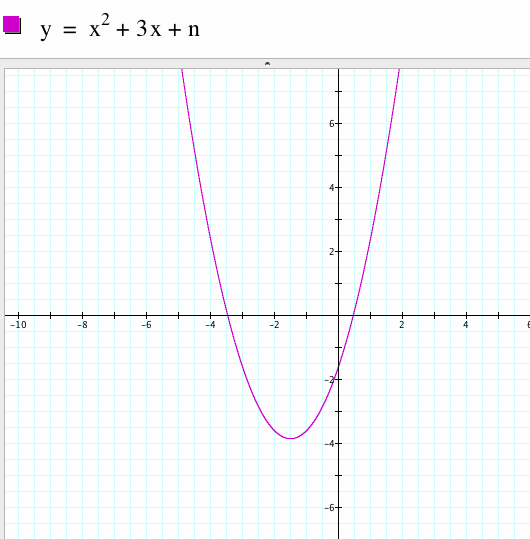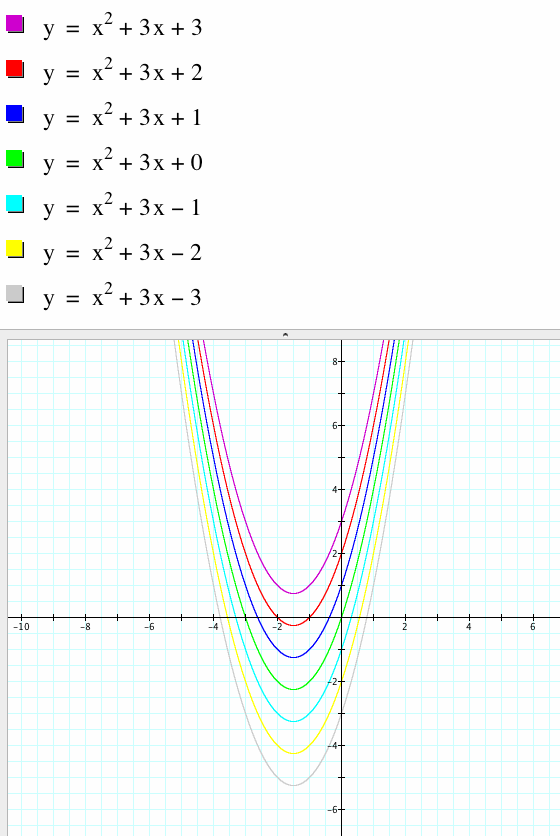Translation of the Parabola
By: Alicia Rosenberger

Let's take a look at the graph where we fix the values of a and b, and vary the values of c. For example, let a=1 and b=3. 
Now if we vary the values for c from -3 to 3, we see what happens to the graph of y. The graph of y translates vertically based on the value of c. A translation is a distance preserving mapping, an isometry, that maps all points on the graph of f(x) to the image points on f(x+c), where we are changing c.

We see that when c=3, the graph of the parabola is translated vertically up, but the shape of tha parabola does not change because the distance preserving isometry maps all the points of our original (red) graph to their image points (pink graph). When c =-3 we see that the graph of y translates vertically down, where again the shape of he parabola does not change (gray graph).
More generally, the graph of y is a parabola, which we see translates up and down based on the value of c. This is evident by the graph and by plugging in values for c to see how the parabola changes. The shape of the parabola y =ax2+bx +c will not change because a and b are fixed. The parabola will stay concave up. What changes in the graph of the parabola is that it is being translated vertically up and down based on a change in c, which we have seen with the pink and gray graphs for example.
Now, if we animate the graph of y =ax2+bx +c by setting a=1, b=3 and c=n, where n varies from -4 to 4, we see how the parabola translates vertically up and down, never changing in shape, only changing its location. The parabola remains concave upward and the axis of symmetry does not change. This is because we have fixed the values of a and b to 1 and 3 respectively, and since those values are not changing, the shape of the parabola will not change.
If we were to observe the impact of the changes in the parameter a, where b=2 and c=2 are fixed, we would expect the change in the parameter to be a transformation that is not distance preserving because it is the product of two transformations. Therefore, the transformation is not an isometry, so the shape of the curve would change in this case, depending on the absolute value of a which determines how flat the curve is over the range of x. Whether the parabola is concave or convex is determined by a transformation of -1, which would be a reflection.

For a=0 the parabola degenerates to a line, as seen below:
On the other hand, the change in b is a translation, where a=1 and c=1 are fixed. The shape of the parabola is not changed but the location of the curve is shifted vertically and horizontally in both the y and x directions:
